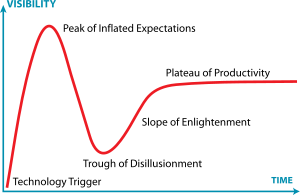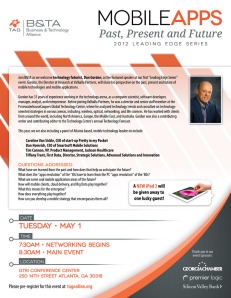Continuing to read "Intention Economy" with great interest. Chapter 12 ("Free and Open") on the connection between "free and open source software" ("FOSS") arrested me.
Searls argues that "...free markets on the Internet depend on FOSS code and development methods". I'll admit that I'm ambivalent about open source. I made a good living in the '80's and '90's from proprietary shrink-wrap software on the Microsoft platform. It was a great platform, chock-a-block with innovation, and we made decent livings while doing work that was fun, interesting, and arguably benefitted society.
Open source has changed all that. The price of software has been radically lowered, and while in each case users of the software (who typically are developers themselves) benefit from high-quality ubiquitous software, it's hurt the software coder in general and the American software coder in particular. (See "Entrepreneurs are the New Labor" for one view on this, for example: Rao doesn't blame FOSS for the current state of affairs, but he is actually somewhat murky on how it has come about. His conclusions and my hypothesis may not be inconsistent.)
In any case, Searls describes the FOSS world in something like the same terms Marx used to describe his Utopian vision of communism. Here is Searls (op. cit., Kindle edition, Location 2286) (quoting Yochai Benkler ["Coase's Penguin, or Linux and the Nature of the Firm"] as well):
Active and useful FOSS code is social as well as personal, in the sense that the writers of free and open code need to cooperate with each other. Yochai Benkler explains this in both “Coase’s Penguin, or Linux and the Nature of the Firm” and The Wealth of Networks. In “Coase’s Penguin,” he writes,
The central organizing principle is that the software remains free of most constraints on copying and use common to proprietary materials. No one “owns” the software in the traditional sense of being able to command how it is used or developed, or to control its disposition …
I suggest that we are seeing … the broad and deep emergence of a new, third mode of production in the digitally networked environment. I call this mode “commons-based peer-production,” to distinguish it from the property- and contract-based models of firms and markets. Its central characteristic is that groups of individuals successfully collaborate on large-scale projects following a diverse cluster of motivational drives and social signals, rather than either market prices or managerial commands.
And here is Marx, in "The Communist Manifesto":
Of course, in the beginning, this cannot be effected except by means of despotic inroads on the rights of property, and on the conditions of bourgeois production; by means of measures, therefore, which appear economically insufficient and untenable, but which, in the course of the movement, outstrip themselves, necessitate further inroads upon the old social order, and are unavoidable as a means of entirely revolutionising the mode of production.
In place of the old bourgeois society, with its classes and class antagonisms, we shall have an association, in which the free development of each is the condition for the free development of all.
Both authors have the theme of disruption of old proprietary relations and the establishment of a new order where price, property, and contract do not direct the course of production but rather the overall needs of the community.
I'm not likening the two in order to besmirch FOSS, but rather to draw attention to its utopian character and to probe its actual underpinning.
Just as communism, in practice, required an absolutist state to order "the people" to do "the rights things", so FOSS, in practice, requires a system of "tithing" where big tech companies -- Google, IBM, and others are mentioned in Searls -- need to subsidize the open source community by grants of time, money, or both. The instantiation of communism, of course, was the very opposite of the dream. What can we say about the instantiation of FOSS?
In the areas where open source has had the biggest inroads -- Internet infrastructure, arguably, operating systems -- innovation has languished. We are still playing with VMS and Unix in one form or another, after 30 years. And the Web stack, despite its creakiness, is not particularly changing.
Compare this to the Big Data area, where innovation was sparked by proprietary projects at Google and others. We have new approaches, new architectures, and ample innovation. This innovation is, of course, now spilling out as open source in the Hadoop ecosystem. It will be interesting to see how much further innovation occurs in the areas that are now open-sourced (as opposed to the application or other layers that are benefitted by the existence of the new "free" stuff).
Jury is still out for me, but I can only offer two cheers for open source. The vision is swell; the free stuff is awesome. The net result may be suboptimal.
Your thoughts?






